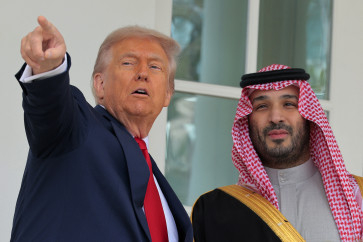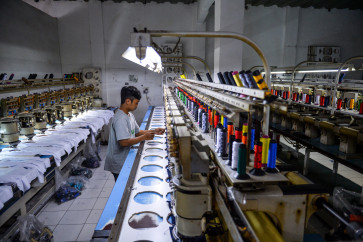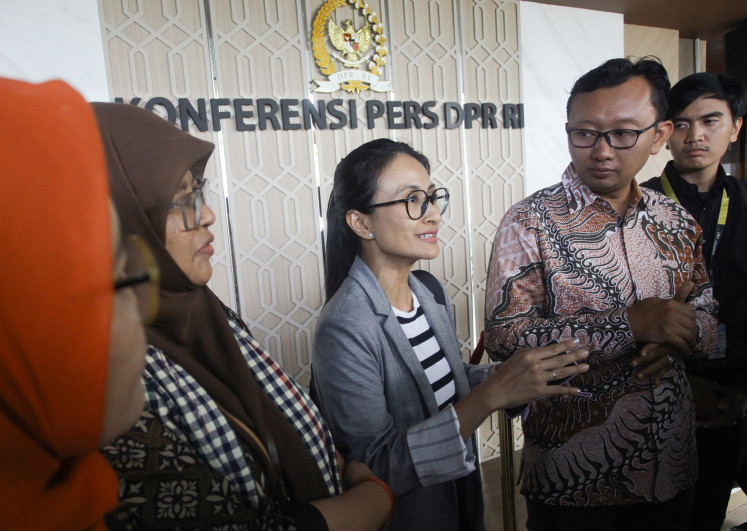Popular Reads
Top Results
Can't find what you're looking for?
View all search resultsPopular Reads
Top Results
Can't find what you're looking for?
View all search resultsIMF slashes RI's growth target to 4.7 percent
The International Monetary Fund (IMF) has slashed its estimate on Indonesiaâs economic growth to 4
Change text size
Gift Premium Articles
to Anyone
T
he International Monetary Fund (IMF) has slashed its estimate on Indonesia's economic growth to 4.7 percent for 2015, a growth revision similar to that made by the World Bank on the country's economy last week.
It is the second revision that the IMF has made this year after it cut the projection to 5.2 percent in May from its original projection of 5.5 percent, which was made in October 2014.
IMF deputy managing director Mitsuhiro Furusawa said in Jakarta on Tuesday that the country was still facing challenges that could hamper its economic progress.
'Just before my visit here, our staff had discussions with the authorities. Based on our preliminary assessment, we expect this year's growth to be at 4.7 percent, downgraded from the previous projection because there is still less demand [in economic activities],' he said during a discussion with local journalists.
The IMF's latest revised forecast came less than a week after the World Bank cut its growth forecast on Indonesia.
The World Bank has not officially announced the forecast revision but in its global outlook summary issued on June 10, its prediction on Indonesia's economic growth was lowered to 4.7 percent from its previous estimate of 5.2 percent announced in December, last year.
Among the components the IMF used for its new projection were weak trade data and the lackluster 4.7 percent growth in the first quarter. 'As you know, import growth has slowed and export growth has slowed as well. We have factored that slower growth into our outlook on consumption and investment,' said David G. Cowen, IMF Asia and Pacific department division chief.
Exports have indeed continued to weaken, as revealed by the May trade data. In May, exports fell 15.2 percent year-on-year to US$12.56 billion. The result brought the January-to-May export figure to $64.72 billion, which was 11.8 percent lower than recorded during the same period in 2014.
Furusawa said several causes, including falling commodity prices, had led to the poor trade data, but he maintained the fund's conviction of a moderate rebound in the second half, even though the change might not fully lift the economy.
Gundy Cahyadi, an economist at Singapore's DBS Bank, shared the IMF's view. 'For now, our GDP growth is still at 5.1 percent, but yes, increasingly it looks like below 5 percent is definitely possible,' he wrote in an email.
He attributed the grimmer outlook to the pace of fiscal spending that had continued to 'disappoint'.
'Up until May, total spending stood below 30 percent of the full-year target. At this rate, total spending for the year may only reach 70 percent of the target,' he said, adding that further delays in the spending might lead to more GDP growth disappointment.
Meanwhile, Barclays economist Wai Ho Leong argued that the IMF's projection was too downbeat as the fund made the assumption that growth in the second quarter would be even weaker than the previous, despite the restart of government spending.
'It sounds like a pessimistic scenario, meant to galvanize the government into taking more decisive steps to boost growth by delivering on its infrastructure pledge,' he told The Jakarta Post.
Barclays expects to soon see a change that will boost the second quarter's GDP, according to Leong. 'That also means the snap back in momentum in Q3 could well be sudden and sharp, enough to take full year just above 5 percent,' he added.










